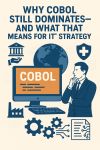CRM: Microsoft wants to simplify the daily life of salespeople with its Viva Sales offer
Viva Sales uses artificial intelligence to take notes, automate data entry and handle other repetitive tasks. Another example of how CRM is evolving to improve the sales experience.
CRM editors claim that their tools improve the work of salespeople. The more critical view of some analysts is that CRM is above all a tool for supervising, or even monitoring, salespeople, and a means of centralizing customer data - primarily the address books of salespeople. As a result, CRMs do not necessarily facilitate the daily work of sales forces. But things seem to be changing.
There are several examples of this at Oracle, HubSpot or Salesforce. And today at Microsoft with Viva Sales, which will be released on October 3rd.
What is Viva Sales?
Viva Sales is a CRM automation tool. Its artificial intelligence (AI)-infused features handle tasks such as data entry into the CRM or note-taking during calls. The AI relies on Microsoft's NLP, speech recognition and machine learning to, for example, track actions in Teams or leverage data in emails and calendar related to a business case.
On the market, HubSpot's "Operations Hub" already offers AI tools to auto-populate and cleanse CRM data. Salesforce, meanwhile, acquired Troops.ai earlier this year to build "Slackbots" that could resemble some of Viva Sales' features, but in the Slack environment.
For Dan Gottlieb, a senior director at Gartner, these tools are signs of a long-awaited movement toward improving the sales experience.
"We're clearly seeing the beginning of a significant investment in end-user applications," Dan Gottlieb believes. "This is an example of what I think we're going to see a lot of in the next wave of CRM."
Automate manual, routine, non-value-added tasks
AI that helps salespeople reduce the number of clicks on a screen and switches between applications in their typically complex daily workflows is very good news for them, Dan Gottlieb concludes.
Viva Sales' ability to dip into Outlook calendar data and use AI to determine whether or not it should be imported into the CRM could save sales teams a lot of time anyway.
Any automation that takes away the need to take notes, summarize calls or manually schedule follow-ups will make CRMs more efficient, adds Kate Leggett, VP and analyst at Forrester Research, for her part.
"This allows salespeople to focus more on the negotiation ... instead of taking notes for reports, which are often done at the end of the day, [which can be] a source of errors and oversights," she says.
As for Viva Sales, the tool integrates with Outlook and Teams-which has 13 times more users than Slack (Salesforce). Nevertheless, Salesforce users are far more numerous than Dynamics 365 CRM users. The challenge for Microsoft will therefore be to convince Salesforce customers who also use Office 365 to take out a subscription to Viva Sales
The new demands of customer experience (CX) are reshaping the contours of CRM. Larger, more operational and more data-intensive, CRM is becoming a strategic platform for managing the entire sales relationship, far beyond sales force automation.
Purchasing habits are changing. The crisis (which has accelerated the development of e-commerce), the advent of new communication channels (mobile, social networks), regulatory changes (end of cookies, RGPD, etc.) have major consequences on the commercial strategy of companies, and in turn on CRM.
In this context, the offers of the major market makers are changing radically.
1 - From CRM to a CX platform
The first evolution can be summarized in one formula: CRM is moving to CX. In other words, CRM is no longer simply a sales force automation (or SFA) tool as it has been historically. It is no longer simply a repository of sales contacts, emails sent, calls made, leads identified, and sales made. It still does this, but CRM now extends to customer interactions with the company, upstream and downstream of the purely commercial exchange, to cover the entire "customer experience" (CX). We now speak of "marketing CRM" (marketing automation) and "CRM for services and support". This evolution towards a "CX platform" also aims to unify data and customer knowledge (the "360° view of the customer") with an integrated analytics and BI layer (dashboard, real-time KPIs, etc.). Unification - or deeper integration between these three CRM families - allows, in addition to analytics, better internal collaboration between company departments.
2 - New sales and communication channels to manage
The crisis has been a gas pedal of e-commerce and distance selling. Including for local shops and in B2B.CRM suites are adapting to this and are increasingly offering bricks to create an online store (such as Demandeware/Commerce Cloud from Salesforce and Magento from Adobe), or integrations with specialists in the field (Shopify, etc.). The democratization of mobile shopping (m-commerce) is forcing brands not to limit their initiatives to websites only and to be able to interface with a mobile application if necessary. Another consequence of mobility is that CRM is enriched with an additional piece of data: location, which can become a sales lever. This double evolution is in line with the support of new marketing and distribution channels favored by the new generations: social networks.The "influencers" on these networks - these digital sandwich men and women - are modern sales representatives whose results must be evaluated by CRM (sales, new brand followers, positive and negative interactions, etc.). The same goes for communications on a company's official accounts, and its ads on Facebook or TikTok. Finally, Instagram or YouTube have become real sales channels, sometimes with flash offers and promotions. This major evolution in usage explains the arrival of so-called "social CRM" functionalities, particularly in B2C.
3 - From mass marketing to ultra-personalization
B2C or B2B, it doesn't matter: customers no longer want to be spammed or called three times a week by a company. Instead, they appreciate "reasonable" marketing and, even more, messages that really correspond to them. Marketing has therefore moved from a statistical analysis of markets as a whole to understanding each customer, with their own individual characteristics. In order not to degrade the CX and the brand image, "personalization" must be transformed into "personification". For the record, the former ranges from sending emails with the recipient's name included in the text, to target pages (in "lead gen" campaigns for example) tailored to prospects. It moves marketing from a mass logic to a "one to many" logic. Personification" takes this logic one step further with an extrapolation of the target's profile (based on his or her browsing habits, the data provided - on age, social class, etc.) to refine the segmentation and achieve a true "1 to 1" relationship between the company and the buyer. As a result, data science applied to CRM, DAMs and other headless CMSs are becoming technological "partners" of CX.
To conclude, CRM is today the center of a convergence of all IT tools useful for CX.
Microsoft partners with Meta to bring Teams, Office, Windows and Xbox to Quest VR headsets
Last year, Microsoft and Meta seemed to be the worst of enemies, poised to compete fiercely for the future of work in the Metaverse.
But yesterday, at its Connect 2022 event, Meta announced that it would be partnering with another mega-tech company - Microsoft. It's a surprise partnership that will see Microsoft and Meta combine forces. For starters, Microsoft will bring its core services - Teams, Office, Windows and even Xbox Cloud Gaming - to Meta's Quest VR headsets.
Virtual reality games have become very popular in recent years, and developers are coming up with titles on a regular basis. Some of these games are classics refreshed with added VR capabilities, like "Resident Evil 4," while others are entirely new games designed for VR, like "Bonelabs." Yesterday, Meta announced a few more additions to the Meta Quest library, including "Iron Man VR" and "Among Us VR," allowing players to live out their dreams of being Tony Stark or sneaking into a virtual spaceship while trying not to be exposed as an imposter.
Xbox and virtual reality fans can rejoice, as Xbox Cloud Gaming is entering the Meta Quest ecosystem. This will allow the Xbox Game Pass Ultimate library to be streamed directly into the headset and provide the best gaming experience ever, aside from being Master Chief in a "Halo" game.
More involved and collaborative virtual workplaces?
With the new Microsoft Teams integration, Meta hopes to make virtual workplaces more involved and collaborative than just Zoom calls and Teams messages. In addition to Teams, Meta has announced compatibility with Microsoft 365. There's nothing more exciting than working on a virtual Excel spreadsheet or watching a virtual PowerPoint presentation. "With Windows 365 coming to Quest, you'll have a new way to securely deliver the entire Windows experience, including all custom apps, content and settings to your VR device with all the power of Windows and Windows apps," Nadella said.
Meta hopes that the integration of Microsoft's suite of productivity and business software will make virtual meetings less distant. At best, virtual collaboration in meetings of the future will be a little less isolating. At worst, every office meeting will now be accompanied by the lifeless, computer-generated stare of your virtual colleagues.
This partnership is still in its infancy, and more details on exactly when these experiences will be available in the coming months.
Amazon Web Services (AWS) relies on more than 100,000 partners in 150 countries to offer the widest possible choice of support services, tools and comfort to its customers. As part of Amazon's core strategy, this plurality is designed to accelerate the transformation of businesses, leading to increased productivity and innovation, lower costs, and greater respect for the environment
From Capgemini and Orange Business Services, heavyweights in the digital industry, to Dataiku and DataDome, not to mention Toucan Toco and Algolia, to name just a few French nuggets, all of these companies, as well as many others, both large and small, are part of the AWS Partner Network, and some of them are in the AWS Marketplace. Whether they are software publishers, specialists in a particular field such as cybersecurity or data science, experts in consulting, training or equipment manufacturing, they are all AWS partners. For example, some 2,000 software publishers offer more than 12,000 products on the online marketplace. AWS' goal is simple, but ambitious: to offer its customers the widest possible range of products and services, and to facilitate the adoption of new tools that will serve to transform the business of companies to make it more agile, more innovative, more competitive and more environmentally friendly.
Cost reduction
For customers, this means, according to an estimate made in May 2022 by Forrester based on interviews with decision-makers in companies that use the AWS Marketplace, "a return on investment of up to 550%," said Valerie Coscas, Director of Partner Business for AWS in France. These advantages are due to several factors, such as increased flexibility in billing, which can be done in six different ways today, ranging from pre-negotiated licenses, to usage without commitment, depending on consumption, even by the second! With the AWS Marketplace, these licensing costs are reduced by 10%, according to the Forrester study. Another advantage is that the Marketplace compresses the time spent searching for, comparing and choosing tool providers - themselves carefully selected and tested by AWS - by 66%. Once the software is chosen, "it's faster to integrate a new vendor into a company's procurement process and tools and to implement its software. The effort in this area is reduced by 75% for customers," she adds. "Even if the software publisher is in control of its offer, the administrative aspects are simplified, both in the establishment of a contract, standardized on the platform, and in billing, consolidated by our services," she adds. These advantages not only reduce costs and risks, but also allow for investment of time and budget in other activities - including innovation. "Our goal is to help our clients in their systemic transformation," concludes Valérie Coscas.
Climate advantage
The tools and services available on the Marketplace aim, beyond these already significant advantages for the success, competitiveness and sustainability of client companies, to reduce their carbon footprint and preserve the environment. As an example, Valérie Coscas cites Metron, a French start-up partner of the Marketplace, which, thanks to its energy management and optimization solution, is helping to improve the energy performance of large groups. "Our ambition in this field is not only to optimize energy use in this period of necessary energy sobriety, but also to reduce the impact of infrastructures or fleets of large construction machines/miners, for example. This work is based on data and artificial intelligence, over the long term," explains the start-up. In this respect, since last December, the AWS Marketplace has included a selection of tools related to the energy transition, in order
Happy partners
And to make life easier for customers, AWS makes sure its partners grow and thrive. In fact, being present in the AWS Marketplace is also a benefit for them. Forrester estimates an 81% return on investment for ISVs who have joined! In addition to increased visibility that allows them to access customers even in countries where they have no sales force, and a channel of choice in terms of distribution, the AWS Marketplace allows startups and large companies "to accelerate their sales cycle and find new customers, sometimes on the other side of the world," notes the head of partners for AWS France. And Darren Yetzer, Vice President, Cloud Partnerships at Algolia, confirms: "Since we joined the AWS Marketplace, we've had incredible results. For us, as a small company, it has allowed us to sell into new markets and close deals in record time - about 25% faster. But the best part is that our contract sizes have increased dramatically."
So the circle is complete. Happy, energetic partners who can offer tools to help customers succeed-that's what the AWS Marketplace is all about.
SAP faces inflation
SAP is not spared from inflation, which has a direct impact on its offerings, the publisher tells its customers. As of January 1, 2023, it will therefore adjust the royalty amounts for its existing support contracts according to the applicable local index.
Inflation is also affecting software publishers, especially SAP, the world's heavyweight in business applications. To cope with this, the German vendor will "adjust" its support costs from January 1, 2023. "The current macroeconomic environment is subject to high inflation rates, which are reflected in regional price indexes," the European software company said in a statement sent to LMI by its French subsidiary. "SAP is not spared from this increase, which has a direct impact on its offerings, due to rising energy, labour and third-party service costs."
In this context, the vendor has decided to adjust the software maintenance fee amounts "according to the applicable local index (CPI)" for the existing contracts: SAP Standard Support, SAP Enterprise Support and SAP Product Support for Large Enterprises, it explains. Specifically, the fees will be adjusted "by a maximum of 3.3% (or the local CPI rate, if lower), effective January 1, 2023. For France, the rate applied will therefore be a maximum of 2.12%," SAP said in its release. This adjustment will be applied to the amount of royalties payable (*). The provider emphasizes that it had not revised its fees in nearly ten years, "including during the pandemic period in 2021 and 2022.
Within SUGEN (SAP user group executive network), a network that brings together 23 SAP user group communities on 6 continents, we are obviously following this issue closely. Six countries are below the 3.3% index: Germany, Austria, China, France, Japan and Switzerland, said Gianmaria Perancin, president of SUGEN. Many customers are unhappy with the receipt of a "very standard circular letter" informing them that the maximum rate of 3.3% will be applied unless the applicable local index is lower. They would have preferred SAP to take the time to personalize the communication for the six countries affected by a lower CPI.
The issue of group contracts signed by certain companies also raises questions. For example, what rate will be applied to the subsidiaries of a French client that are located in a country affected by the 3.3%? "If the global maintenance of the contract is paid by France, we understand that the contractual clauses apply, they will only pay 2.12% more. This may be different if each subsidiary pays its share directly to SAP or in cases where the payment goes through a foreign country subject to the 3.3% increase (for example the United States or Great Britain), says Perancin.
The USF will hold its annual convention in Lyon on October 5 and 6. The adjustment of the fees implemented by SAP on its software support should be commented on during the usual press briefing.









